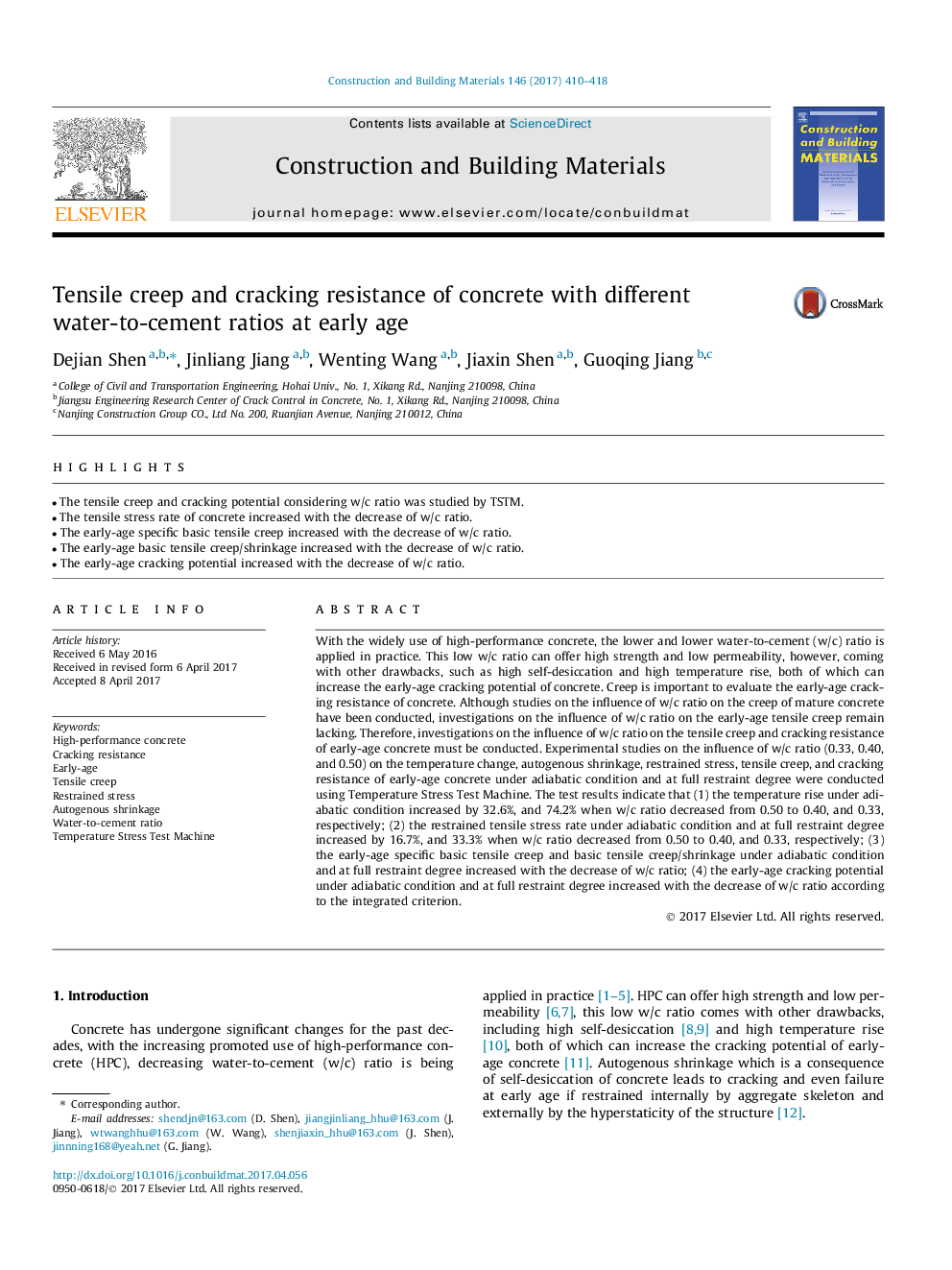| Article ID | Journal | Published Year | Pages | File Type |
|---|---|---|---|---|
| 4913316 | Construction and Building Materials | 2017 | 9 Pages |
Abstract
With the widely use of high-performance concrete, the lower and lower water-to-cement (w/c) ratio is applied in practice. This low w/c ratio can offer high strength and low permeability, however, coming with other drawbacks, such as high self-desiccation and high temperature rise, both of which can increase the early-age cracking potential of concrete. Creep is important to evaluate the early-age cracking resistance of concrete. Although studies on the influence of w/c ratio on the creep of mature concrete have been conducted, investigations on the influence of w/c ratio on the early-age tensile creep remain lacking. Therefore, investigations on the influence of w/c ratio on the tensile creep and cracking resistance of early-age concrete must be conducted. Experimental studies on the influence of w/c ratio (0.33, 0.40, and 0.50) on the temperature change, autogenous shrinkage, restrained stress, tensile creep, and cracking resistance of early-age concrete under adiabatic condition and at full restraint degree were conducted using Temperature Stress Test Machine. The test results indicate that (1) the temperature rise under adiabatic condition increased by 32.6%, and 74.2% when w/c ratio decreased from 0.50 to 0.40, and 0.33, respectively; (2) the restrained tensile stress rate under adiabatic condition and at full restraint degree increased by 16.7%, and 33.3% when w/c ratio decreased from 0.50 to 0.40, and 0.33, respectively; (3) the early-age specific basic tensile creep and basic tensile creep/shrinkage under adiabatic condition and at full restraint degree increased with the decrease of w/c ratio; (4) the early-age cracking potential under adiabatic condition and at full restraint degree increased with the decrease of w/c ratio according to the integrated criterion.
Keywords
Related Topics
Physical Sciences and Engineering
Engineering
Civil and Structural Engineering
Authors
Dejian Shen, Jinliang Jiang, Wenting Wang, Jiaxin Shen, Guoqing Jiang,
